View Factor -Parallel Plate
The view factor is a measure of how two surfaces see each other. It is an important phenomenon in radiative heat transfer. Radiative heat transfer depends on the ratio of the surfaces to each other.
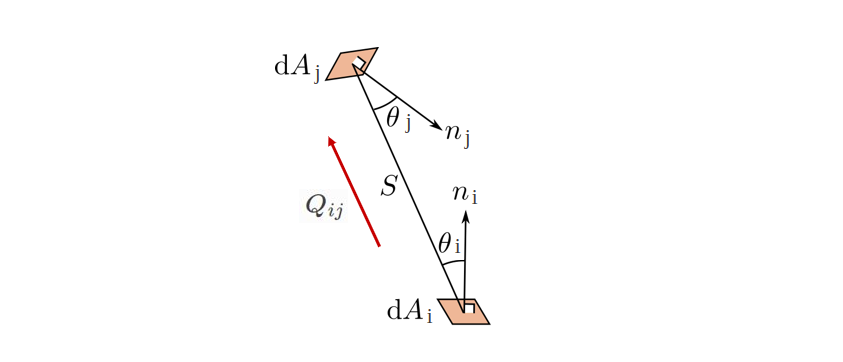
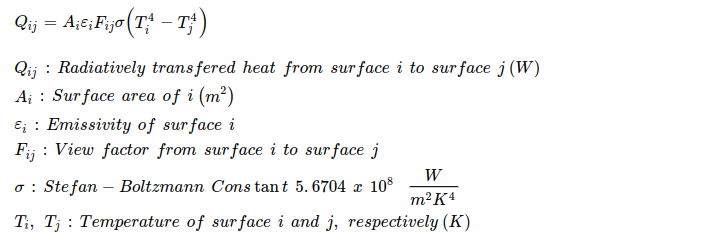
The view factor depends on the geometric properties such as the dimensions of the surfaces, the distance between them and the angle. For detailed information about the viewfactor calculation, the 13th chapter of Incropera can be examined [1].
TwinAPI View Factor Function
The view factor function was created in order to model industrial heating processes in TwinAPI. By using the view factor function, parallel 2D plates can be created and these plates can be divided into small surfaces, and the view factors between these surfaces can be calculated. In heating processes such as thermoforming, heating can be performed using a one-sided or two-sided heater. Therefore, view factor calculation can be made for both cases with the TwinAPI-view factor function.
Using the View Factor Function
1from TwinAPI.EngineeringFunctions.Physics.HeatTransfer.view_factor import *
2
3x_len = 1.0
4y_len = 1.0
5distance = 0.2
6number_of_sheet_elem = (2, 3)
7number_of_top_heater_elem = (2, 2) # row, column
8number_of_bottom_heater_elem = (1, 3) # row, column
9plate_number = 3
10viewfactor_calculator = ViewFactor.CreateGeo(plate_number, x_len, y_len, distance, number_of_sheet_elem, number_of_top_heater_elem, number_of_bottom_heater_elem)
11viewFactorsWithCavity = viewfactor_calculator.Calculate(SaveAs="viewFactors_test.csv", Cavity=False)
First, the view factor function must be imported. Then the geometric properties of the plates should be defined. Here the number of plates, the lengths in 2 dimensions and the distance between the plates must be defined. For example, if we name the heated plate as sheet, for a single heating case; Since it consists of 1 sheet and 1 heater, the number of plates should be defined as 2. On the other hand, the number of plates should be defined as 3 in the double-sided heating process.
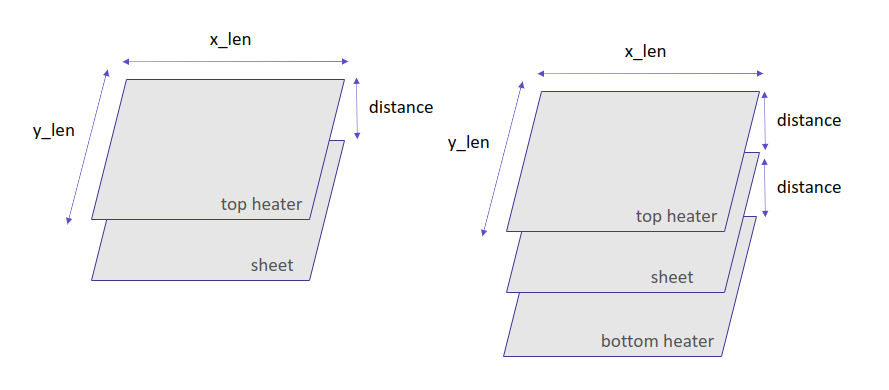
In addition, the element configurations of each of the plates should be defined.
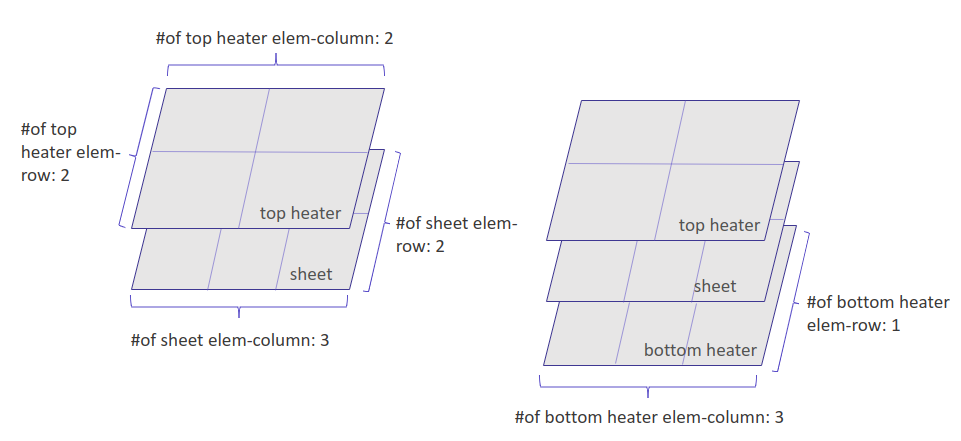
View Factor Function Output
The content of the generated csv file is as shown below.

Here, in the view factor matrix part, there are view factors from each surface to another surface.
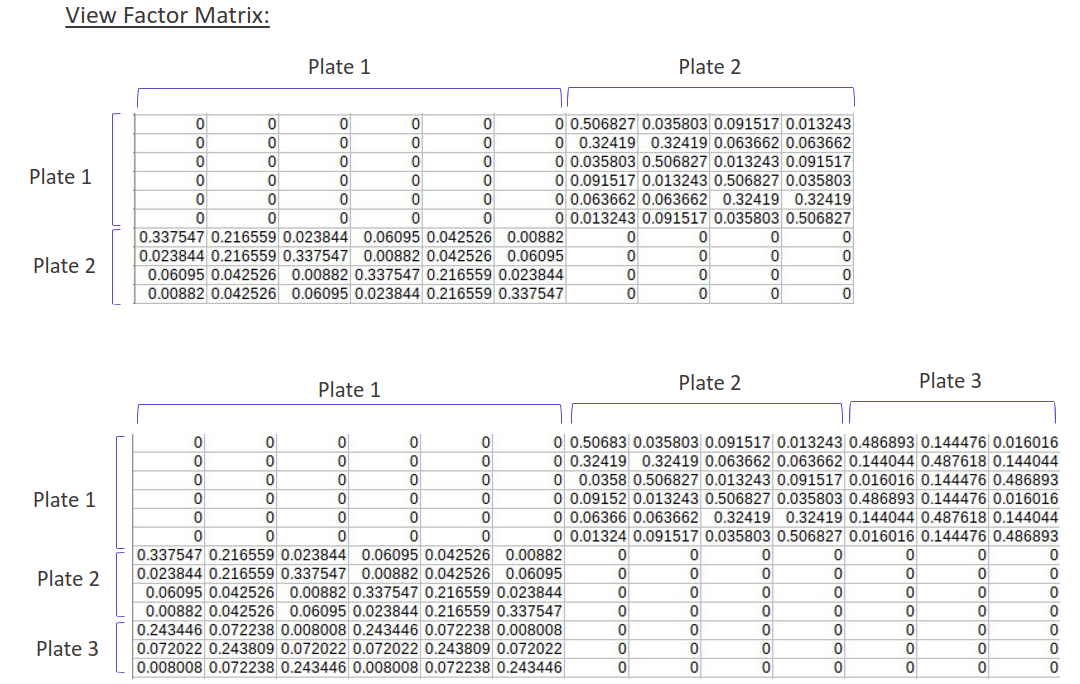
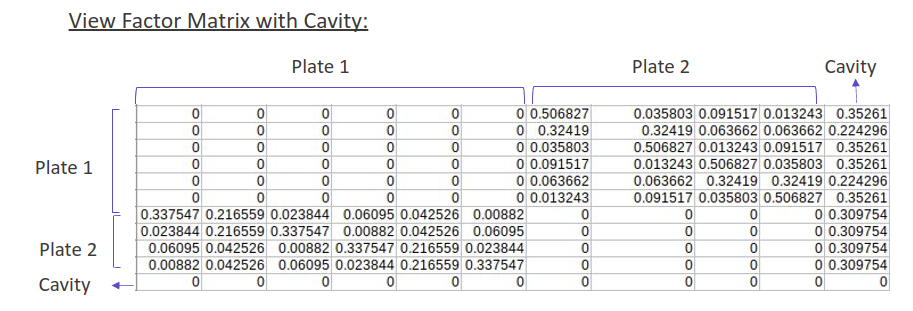
References:
[1] Theodore L. Bergman, Adrienne S. Lavine, Frank P. Incropera, David P. DeWitt - Fundamentals of Heat and Mass Transfer-Wiley (2017)
[2] View3D Program, https://github.com/jasondegraw/View3D